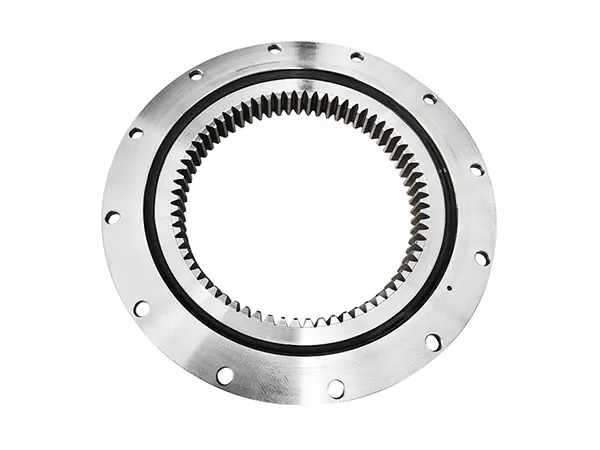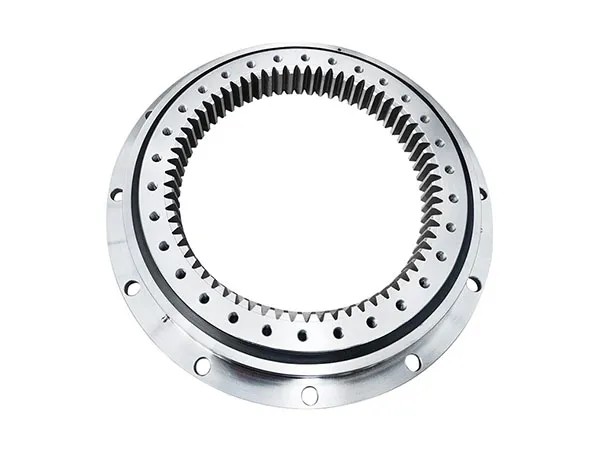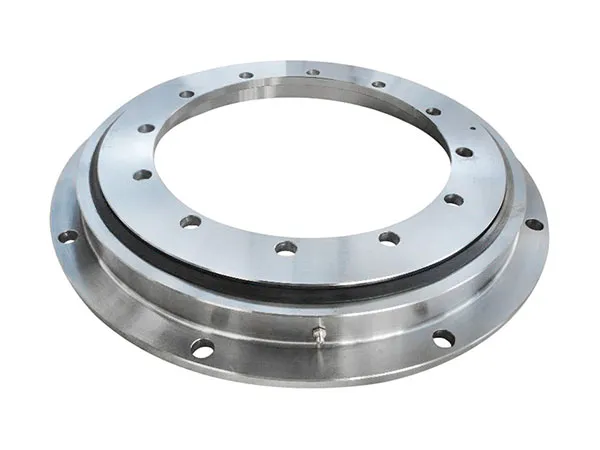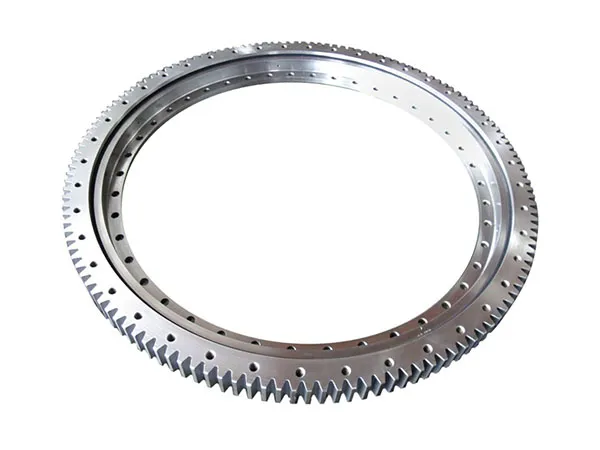- +86 13837949030 +86 15890619536
- info@lymcbearings.com export@lymcbearings.com
- Luoxin Industrial Cluster, Luoyang City,Henan Province,China
Time:2025-04-28 02:30:01 Source:Luoyang MC Bearing Technology Co.,Ltd.
Flange slewing bearings are robust components, but they can experience problems over time. Here are some common issues and their solutions.

Problem: The bearing rotates unevenly or gets stuck, even without a load. This could be due to the ring becoming out of round during transport or storage.
Solution: This issue should ideally be caught during the fitting process. If it occurs after installation, the bearing might have been deformed. In such cases, the bearing may need to be replaced. Ensure proper handling and storage to prevent this.
Problem: Unusual sounds like squealing or grinding can indicate issues. Squealing often suggests insufficient lubrication, while grinding noises might mean internal wear or contamination.
Solution:
Squealing: Apply the correct type and amount of lubricant. Refer to the manufacturer's recommendations for lubrication intervals and grease type (EP2 grease is often recommended).
Grinding: Stop operation immediately and inspect the bearing for wear, damage, or foreign material. Clean and relubricate or replace the bearing if necessary.

Problem: Grease leaking from the seals.
Solution:
Over-lubrication: Ensure you are not lubricating too frequently. A typical cycle is 150-250 hours, but adjust based on the operating intensity.
Thinned grease: Check if hydraulic or gear oil from the slewing motor has contaminated the bearing grease, making it thin. Repair any leaks in the motor seals.
Incorrect grease: Using the wrong type of grease can cause it to thin, especially with temperature increases. Use the manufacturer-recommended grease.
Damaged seals: Carefully inspect the seals for damage or displacement and replace them if necessary.
Problem: Over time, the rolling elements and raceways wear, leading to increased play or tilting.
Solution: Regularly inspect the bearing for wear by measuring the tilting clearance. If the clearance exceeds the manufacturer's specifications, the bearing needs replacement. Proper lubrication and avoiding overloading can minimize wear.
Problem: The bearing or the entire slewing mechanism moves sluggishly or not at all. This could be due to issues beyond the bearing itself, such as a malfunctioning hydraulic motor, reducer problems, overload, or valve issues. However, a severely damaged or jammed bearing can also cause this.
Solution: Investigate the entire slewing system, including the hydraulic components and the bearing. If the bearing is the cause (e.g., severely worn or damaged), it will need replacement.
Problem: The hydraulic system pressure behaves unusually, especially under heavy loads, potentially causing difficulty or inability to rotate. While this often points to hydraulic system issues, a binding or heavily worn bearing could contribute.
Solution: Diagnose the hydraulic system first. If the bearing is suspected, inspect it for damage or excessive friction.
Problem: Mounting bolts can loosen over time due to vibration or improper initial tightening. They can also experience fatigue failure under repeated loading.
Solution: Regularly check the bolt torques according to the manufacturer's recommendations. Use a torque wrench and follow the correct tightening sequence.
When replacing bolts, clean them, apply thread-locking adhesive, and tighten to the specified torque.

Problem: Rust can form on the bearing surfaces, especially in humid or harsh environments.
Solution: Ensure proper sealing to prevent water and contaminants from entering the bearing. Apply rust-preventive oil to exposed surfaces. For harsh environments, consider bearings with special corrosion-resistant coatings or materials.
Problem: Dirt, dust, and other foreign particles can enter the bearing, causing wear and damage.
Solution: Maintain the integrity of the seals. Regularly clean the area around the bearing to prevent debris from entering. Proper lubrication also helps to flush out contaminants.
Problem: Incorrect mounting on an uneven or insufficiently rigid base can lead to uneven load distribution, deformation, and premature failure. Incorrect preloading or bolt torquing can also cause problems.
Solution: Ensure the mounting surfaces are clean, even, and rigid. Shim any uneven areas. Follow the manufacturer's instructions for installation, including proper preloading and bolt torquing sequences and values.

Regular Inspection: Visually check for cracks, damage, loose bolts, and lubricant leaks. Listen for abnormal noises or vibrations.
Proper Lubrication: Adhere to the recommended lubrication schedule and use the correct type of grease. Ensure proper sealing.
Cleanliness: Keep the bearing and surrounding area clean.
Bolt Checks: Regularly verify the tightness of mounting bolts.
Load Management: Avoid overloading the bearing beyond its rated capacity.
Environmental Considerations: Take precautions in harsh environments (e.g., extreme temperatures, dust, corrosive substances).
By understanding these common problems and their solutions, and by implementing a regular maintenance schedule, you can significantly extend the life and ensure the reliable operation of your flange slewing bearings.